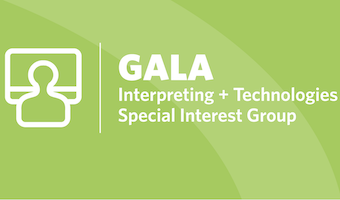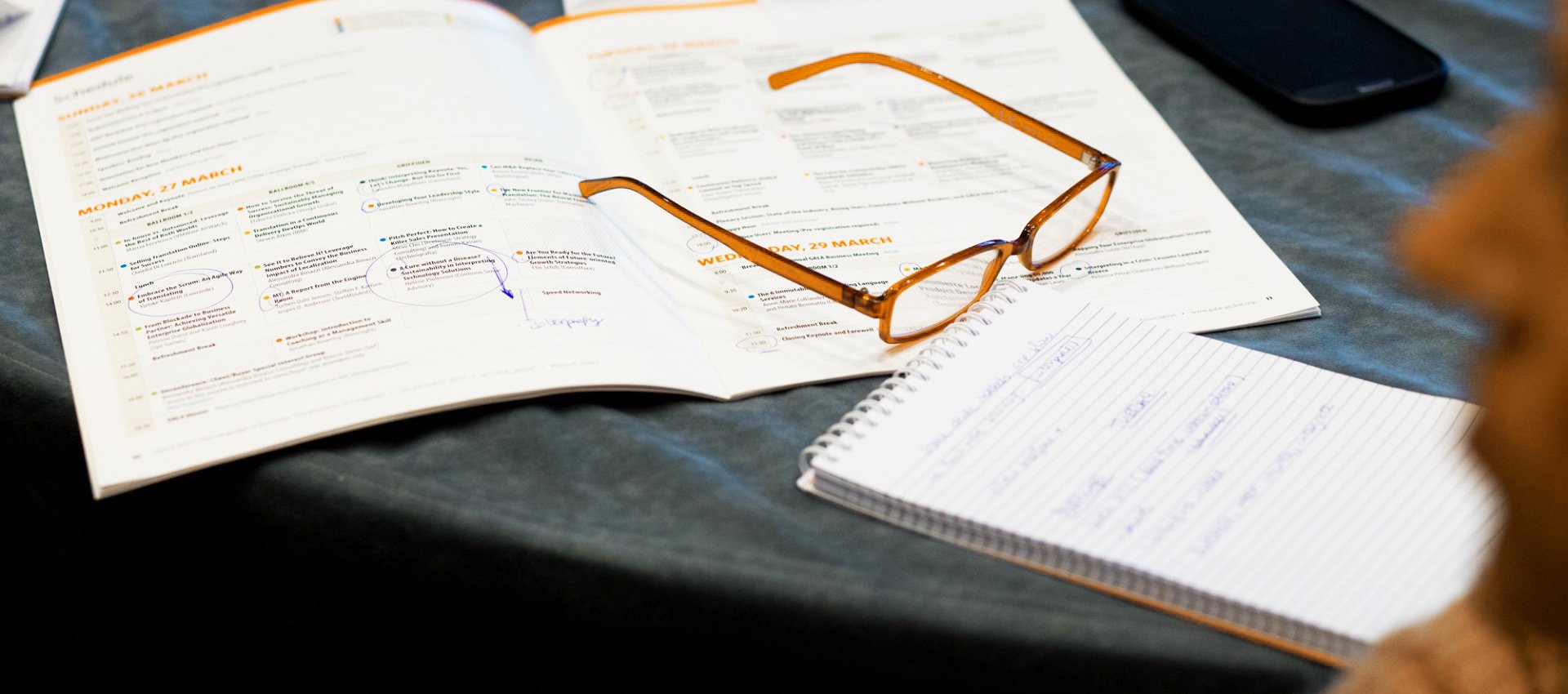- Home
- Resource Center
- Articles & Videos
- Integration of Interpretation Technology (RSI/AI) in the End-to-End Event Workflow
20 January 2025
Integration of Interpretation Technology (RSI/AI) in the End-to-End Event Workflow
Sign up for our newsletter on globalization and localization matters.
If you’ve ever wondered how AI, remote simultaneous interpretation (RSI), or machine translation fits into the interpreting field, this recording of a recent panel discussion moderated by the GALA Interpreting and Technologies SIG is for you.
Nicolai Benu (Boostlingo), Viviana Bernane (Welocalize), and Kirk Hendrickson (Worldy) shared insights on the challenges, trends, and opportunities in interpreting technology. The panel was moderated by Aki Hayashi (Dell) and Claudio Fantinuoli (KUDO).
Technology Meets Interpretation: A Growing Intersection
Technology isn't just knocking on the door of interpreting - it's stepping in and taking a seat. From live event interpretation to virtual and hybrid settings, AI and other technologies are reshaping the way we work. Remote interpreting and machine interpretation tools are making it easier to provide multilingual access, even for complex global events.
But it's not without its hurdles. Buyers and professionals alike need to figure out how to seamlessly integrate these tools to ensure that the audience experience remains at the forefront.
The challenges of technology integration
Let's face it: technology can be a double-edged sword. While it opens up exciting possibilities, integrating interpreting technology into live events comes with its own set of challenges.
- Tech stack headaches: Platforms like Zoom and event-specific software must work harmoniously with interpreting tools.
- Managing expectations: AI is impressive, but not perfect. Buyers sometimes expect magic, and vendors and interpreters need to set realistic goals for its use.
- User experience: No matter how advanced the technology, it needs to work smoothly for attendees.
Choosing the right tools
When choosing interpreting technology, there's no one-size-fits-all solution. Professionals need to consider factors such as ease of use, integration capabilities, and audience needs.
Testing is key - demos and failover plans help ensure that the chosen solution can handle any hiccups.
Interestingly, there is also a growing demand for hybrid models that combine professional interpreters and AI-powered interpretation.
The Human touch vs. AI power
There's no denying it: AI is revolutionizing the interpretation space. But does that mean humans are out of the picture? Not at all.
- AI shines: It's fast, scalable, and cost-effective, which makes it great for simple tasks.
- Humans excel: Nuance, emotion, and cultural sensitivity are areas where interpreters still reign supreme.
- The sweet spot: Hybrid setups are often the best choice, combining the efficiency of AI with human expertise to suit different scenarios.
Planning makes perfect
For live events, integrating interpreting technology is all about preparation. Panelists emphasized involving technology providers early in the planning process. A little foresight can prevent last-minute surprises—like discovering your chosen platform can’t handle streaming or realizing the venue’s WiFi isn’t strong enough.
Simplicity is key. Some setups can be as basic as a smartphone or laptop paired with a QR code for attendees. For larger events, working closely with AV teams ensures the interpretation process aligns with the overall production flow.
Pre- and post-event services: The Unsung Heroes
Interpretation doesn’t stop when the live event ends. Increasingly, professionals are seeing demand for pre- and post-production services:
• Before the event: Localizing materials like signage and prepping glossaries or term bases for interpreters and AI tools.
• After the event: Turning live captions and transcripts into polished, multilingual on-demand content.
There’s even talk of real-time post-editing—combining AI and human editors to speed up the process.
Looking Ahead: Trends to Watch
The future of interpretation and interpreting technology is brimming with opportunities. Here are some trends to keep an eye on:
• Sign language integration: Advances in AI-driven tools and picture-in-picture options are expanding accessibility for deaf and hard-of-hearing attendees.
• Real-time editing: Post-editing workflows for subtitles and transcripts could soon incorporate human-in-the-loop solutions for faster, polished outputs.
• Blurring boundaries: Interpretation and localization are increasingly overlapping, creating new opportunities for professionals to pivot between roles.
The Audience Comes First
At the heart of all this innovation is one goal: making sure audiences have a seamless experience. Whether through AI, humans, or both, the focus should always be on breaking language barriers and ensuring everyone feels included.
Wrapping It Up
The world of interpretation is on an exciting journey. As interpreting technology evolves, so do the ways we connect people through language. Whether you’re a seasoned interpreter or just dipping your toes into this space, now’s the time to embrace the change.
By staying informed, testing new tools, and keeping the audience in mind, interpreting professionals can thrive in this tech-driven era. So, let’s get out there, adapt, and continue doing what we do best: bringing people together, one word at a time.
(*) The recap was produced with the help of an AI tool and reviewed/fact-checked the the moderators of the GALA Interpreting SIG.
Do you want to contribute with an article, a blog post or a webinar?
We’re always on the lookout for informative, useful and well-researched content relative to our industry.

GALA Interpreting and Technologies Special Interest Group (SIG)
The GALA Interpreting and Technologies Special Interest Group (SIG) focuses on exploring and promoting interpreting technology within the industry. Activities include bi-monthly SIG meetings, ad hoc webinars, and sessions at annual conferences. It is a hub for professionals interested in interpreting solutions for large globalization events and smaller meetings, encompassing technologies like AI-based live interpreting, on-demand services, and remote interpretation platforms. The group invites collaboration and ideas to shape future discussions and webinars.


